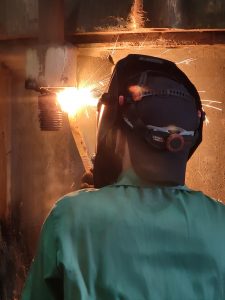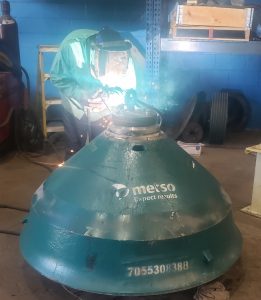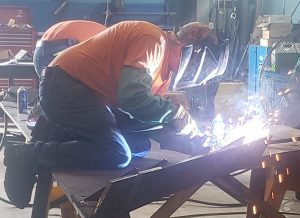The History of Welding
Can you picture a world where welding had never been invented? Better yet, imagine if your vehicle was constructed without modern welding techniques. It would not be aerodynamic, that’s for sure. The process of melting or fusing metals together dates to back to the Bronze Age, or 3300 BC – 1200 BC. In other words, an extremely long time ago. In fact, During the Sui Dynasty (581 – 618 CE), Chinese metalworks discovered how to turn iron into steal in 589 AD.
Thanks be to the Egyptians back in 3000 BC for creating the melting of metals, along Russian inventor Nikolay Benardos, who introduced carbon arc welding during the 1860s and 1870s. Benardos’s was the first practical arc welding method of its time. It is safe to say that without the development of melting metals back in the day, we would not be living the in the world we have today. It’s quite possible we would be driving around in a Fred Flintstone car still without the development of modern-day welding throughout the last 5000 plus years.

Since the 19th century, multiple techniques for accurate welding have been developed. Today, we have robotic welding, a method growing in popularity. Robotic welding uses computer controls to weld metals together much more quickly and accurately than is possible through manual welding. This will also help keep workers safe. We can only imagine what incredible new welding processes the next century will bring.
Below is a timeline of the progression of welding throughout history, taken from Fairlawn Tool Inc’s website:
• 4000 BCE: Historians believe the ancient Egyptians developed the earliest forms of welding around this time. Civilizations started welding with copper, and over time, moved on to other metals like iron, bronze, gold and silver.
• 3000 BCE: The Egyptians used charcoal to generate heat to turn iron ore into a loose substance called “sponge iron.” They then hammered the loose particles together to join pieces in the first instance of pressure welding.
• 1330 BCE: The Egyptians began soldering and blowing pipe, joining pieces of metal together.
• 60 CE: The historian Pliny recorded information about the gold brazing process. He included information about using salt as flux and even mentioned how a metal’s color reveals its brazing difficulty.

• 310 CE: Indian welders created the Iron Pillar of Delhi, which still stands today, using iron from meteorites. The Pillar remains an impressive display of early craftsmanship, at 25 feet high and six tons in weight.
• 1375 CE: Forge welding was at the forefront during this period. Blacksmiths would heat metal pieces and pound them together until they bonded.
• The 16th century: Welders advanced in their craft during this period. Manuscripts from this century included the first references to the word “weld.” The Italian goldsmith Benvenuto Cellini wrote about a soldering process used for brazing silver and copper.
• The 18th century: Welding technology skyrocketed in the 18th century due to the Industrial Revolution, which paved the way for the society we know today. Industries needed more advanced welding practices to achieve their goals. Welders developed innovative welding technologies to meet this demand. A couple of new advances included the development of blast furnaces and the discovery of oxygen.

• The 19th century: This century saw the discovery of the electric arc by Sir Humphry Davy. Other inventors also innovated and patented fusion welding, bare metal electrode welding and carbon arc welding. Robbers used a torch to break into a bank vault, providing the first look at purposely using torches to melt metal.
• The 20th century: Thermite welding first emerged in 1903. In 1919, C.J. Holslag invented alternating current welding, replacing electric arc welding as the most prevalent form of welding in the United States. Welding continued to increase and was in high demand due to the First and Second World Wars. President Woodrow Wilson established the United States Wartime Welding Committee to increase the production of welded equipment.
Let Marion Machine take care of your repair and welding needs on your crushing and screening equipment. Visit us today at https://marionmachinellc.com/
Christopher Joyce Vulcan Materials of Winston-Salem, NC
Our Metso HP 800 Mainframe had a loose shaft and we re-fit the shaft back to OEM specs with a 2-week-turnaround to get a 3.5-million-ton-plant back up and running.